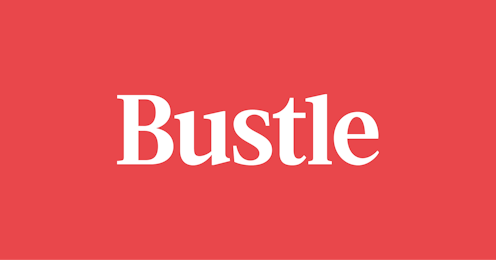Fashion
Plus-Size Models Wearing Fat Suits is Questionable

Last Friday, Refinery 29 posted an article about plus-size models wearing fat suits — padding their butts, breasts, and thighs to fit the larger spectrum of plus clothing, when they themselves are on the smaller end of said spectrum. And when this news (paired with striking imagery) broke, my jaw literally (I mean it... literally) dropped. It's no secret that fashion houses and clothing companies often cast straight-size models for their plus-size lines, but when it comes to the world of genuine plus modeling, I guess I thought we were getting a bit closer to realistic representations of women. If the photos on Refinery 29 prove anything, however, it's that this just isn't the case.
Perhaps the most interesting part of Refinery 29's coverage was its inclusion of the opinions of the women who actually have their bodies padded during shoots. Model Brittnee Blair (often seen gracing the Fashion to Figure site) brought up the conflict between what is considered artistic versus what sets a bad precedent: "There’s always some form of padding used — it’s like you’re sculpting your body. Is it realistic? It depends. If you look at it as artistic, then I can respect it. But, as an ideal for women? It’s unhealthy, because not a lot of women are going to look like that."Sabina Karlsson, another of the interviewed models, says she'd rather not wear pads at all, and that the normalized practice is just enforcing the same tired ideals: "When I was straight-sized, I wasn't skinny enough, and now I’m plus-sized, and I’m not curvy enough. It would be nice to be like: I’m this model, and this is me. For society to know that curvy models don’t have the same sizes... you can be curvy and a size 12."
There's a part of me that understands that all clothes don't fit every model perfectly, and so there has to be lots of trickery pulled behind the scenes in photo shoots that feature plus and straight-sized models. I mean, there's a reason why What Not to Wear 's Clinton and Stacy always told us the number one secret to looking great in clothes is getting them tailored, right? But the other part of me wishes that we treated garment alteration in the same way we are beginning to look at photoshopping and digital alteration. Going to the [very reasonable] lengths of indicating when a garment has been tailored or the model's body has been changed to accommodate clothing in some way would go a long way towards transparency. And subsequently, toward our understanding of what goes into creating the images we see and what we can really expect from a piece of clothing.
Like Brittnee points out, playing with body proportion and size for artistic reasons is a different circumstance — though I don't think anyone will be calling website product shots fine art any time soon. But the idea that the images that are being used to sell us the exact same clothes they're featuring are showing clothes after they've been changed to fit the body they're on is pretty messed up. I don't think it's unreasonable to assume that the pictures we're being shown should be at least a little representative of the true nature of the fit of the item we're being expected to purchase.
The expectation that things should, or even could, fit us right off the rack, or that the items we're coveting would look just as good on us as they did on that model, is responsible for many a changing room meltdown. As xoJane's Emily McCombs noted in a piece on erratic sizing: "It's the clothes that don't fit my body. Yet I walk away feeling like my body doesn't fit into the clothes." There's absolutely nothing wrong with having to tailor or alter clothes to fit you properly; but when we don't talk about this (when we don't normalize it), it can make us feel like our bodies are at fault rather than our clothes.
I know many women who are size 18/20, and some of them have similar proportions to a size 12. And some of them don't at all. But when companies sell up to a 4X or into the 20s, why is a size 12 always chosen as the representative of their offerings? By choosing the smallest possible model (generally a size 10/12) for plus-size work, and insinuating that with a little extra padding that's what a size 16 or 18 looks like, the plus-size industry is mimicking the "smaller is better" ideal of the rest of the fashion world. And that is the actual root of the problem. Just because fat bodies are deemed "political" and dressing them cutely to show off to the world is also deemed "political," it doesn't mean the plus-size fashion industry is necessarily following suit. Dressing in a way that brings attention to the bodies that society tells us we should try to hide is progressive and a little rebellious. Conforming to age-old industry standard practices is not.
The reality is that plus-size clothing companies are still playing by the same rules of the mainstream fashion industry — because at the end of the day, they rely on advertising. Even though evidence shows that not altering images and showing women in a variety of sizes is actually good for business, old habits die hard — and it's difficult to shake the rules you've been playing by for decades. I get it. But I also get that we can do better by women. Companies can be more transparent about what goes into creating the images they use, and can show a wider variety of sizes and body types. Plus-size women, and all women, come in the widest variety of body shapes and sizes. And all of them buy clothes. So see what I'm getting at?
Images: Refinery 29